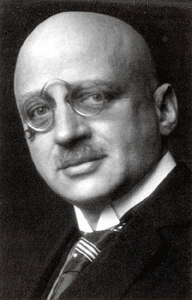
|
| Image courtesy of ScienceHeroes.com |
A
primary chemical in fertilizer that makes plants grow is nitrogen.
Nitrogen is very common in the atmosphere, but is very difficult to get
out of the air and into a liquid or solid form that can be used. Doing
so is known as “fixing” nitrogen. This can only occur naturally with
bacteria or lightening. At the beginning of the twentieth century
scientists had been trying for more than 100 years to fix or synthesize
nitrogen in a man-made manner.
Farmers
could get nitrogen out of manure, but there was not enough for large
farms. At the time, sodium nitrate, one of the few available chemicals
that could be mined containing nitrogen was available on the coast of
Chile. There, a 220 mile coastline of bird droppings, five feet deep
was the largest source in the world. The global dependence on Chile for
this natural source of nitrogen compounds was a concern for many
political leaders. Thus, the 100 year long goal of chemists and other
scientists was to develop a method to synthesize these compounds into
liquid ammonia, a known compound that would hold fixed nitrogen. This
dilemma became the focus of Fritz Haber’s work during his time at the
University of Karlsruhe, beginning in 1894.
Haber published a
book about thermodynamics and gas reactions in 1905. In this book he
discussed the theoretical process of producing ammonia from hydrogen and
nitrogen. As he later said in his Nobel Prize speech, “We are
concerned with a chemical phenomenon of the simplest kind. Gaseous
nitrogen combines with gaseous hydrogen in simple quantitative
proportions to produce ammonia.”
But the devil was in the
details. The only hints that such could be done required very high
pressures and temperatures, and a metal catalyst. Off and on over a
number of years, Haber experimented with different temperatures,
pressures, and metal catalysts. He made progress using osmium and
uranium. Finally, on July 3, 1909, he succeeded in his laboratory in
producing ammonia yields on the order of 10% continuously for five
hours.
This proved
that commercial production was possible. The problem was that Haber’s
process occurred in a tube 75 cm tall and 13 cm in diameter. There were
no large containers that could operate at the temperatures and pressures
he used. At the same company where Haber worked was another chemist,
Carl Bosch. Bosch took on the challenge of escalating the chemical
process to an industrial level. After thousands of experiments he
perfected a method to do so that became known as the Haber-Bosch
Process.
Vaclav
Smil, in his book Enriching the Earth, says that the Haber-Bosch process
"has been of greater fundamental importance to the modern world than
... the airplane, nuclear energy, space flight, or television. The
expansion of the world's population from 1.6 billion people in 1900 to
six billion in 2000 would not have been possible without the synthesis
of ammonia." The International Fertilizer Industry Association reports
that over 100 million metric tons of nitrogen produced by the
Haber-Bosch Process are applied annually to global crops, over half of
it to cereal crops. Smil and others have calculated that over 2 billion
people, about 40% of those alive, are fed by food grown using fertilizer
from the Haber-Bosch process. Haber received the Nobel Prize for his
discovery in 1918.
Haber’s scientific work created a capacity to
sustain the world’s need for food production, but his labors also
provided the ability to destroy life. He was so passionate and
dedicated to his native Germany, that he used his genius for immoral and
destructive purposes when World War I broke out. During the war Haber
worked with the German government to find ways to prolong the life of
Germany’s wartime resources and keep them in the war as long as needed.
He developed alternatives to traditional antifreeze to keep vehicles
running and his ammonia synthesis methods were used to create nitric
acid, a key component in explosives and ammunition. But Haber’s
extensive knowledge of chemistry made him instrumental in a far darker
creation - that of chemical warfare. He initially worked to invent
protective chemical devices for troops, but soon switched to developing
destructive and fatal chlorine gas to use against the enemy forces.
Fritz Haber directed the very first release of chlorine gas on April 22,
1915 in France, killing over 10,000 allied troops. Haber’s wife,
fellow chemist Clara Immerwahr shot herself in the heart three weeks
later. It is speculated that she was distraught over her husband’s work
on poison gas. The morning of her death, Haber left to supervise a gas
release on Russian troops.
Haber’s dedication to his country
likely spared his life when Hitler became Chancellor and purged the
Jewish people from Germany, but he still was forced to leave. He
immigrated to England with his second wife and two children in 1933 to
take a position at Cambridge, but decided to go to Switzerland in 1935
because of England’s depressing climate. On his way to Switzerland on
January 30, 1935, he died at age 65.

